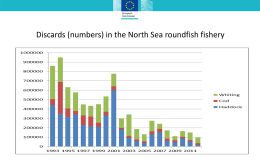15 May 2014
The incoming ban on the practice of discarding fish is high on the media agenda at the moment, with The Times and Newsnight both carrying stories after concerns were raised about its implementation by the National Federation of Fishermen’s Organisations (NFFO). The NFFO fears that if not handled properly, the ban could have serious negative effects for the industry including jeopardising the viability of fishing businesses and damaging the marine ecosystem.
The ban begins coming into force at the beginning of next
year and will require fishermen to land all quota species they catch, unless
there is a specific exemption, instead of throwing back those species of little
monetary value or those caught outside quota.
The Fish Fight campaign, led by TV chef Hugh
Fearnley-Whittingstall, has been one of the driving forces behind the discard
ban. The central charge laid by the fishing industry against Hugh’s Fish Fight
is that the public and politicians were misled by its campaign which claimed
discards was a problem not being addressed by those in the catching sector.
The graph below from an authoritative source demonstrates in
the North Sea roundfish fishery, discards had already been reduced by nearly
90% since 1993, before Hugh arrived on the scene. Minimal research and a quick
look at the science would have shown this. Would the politicians have voted for
a blanket discard ban had Hugh presented a fair and balanced picture?
The industry achieved this huge reduction in discards
through partnership between fishermen and scientists, developing more selective
gear and fishing methods, and through reducing the fishing effort.
Overall,
the whole English fleet reduced its discards by 50% over the last 10 years,
with every reason to believe that this progress would continue through multiple
initiatives at local fishery level. However, now the industry has to put
its efforts into solving the problem of how to operate within an unworkable
landing obligation.

